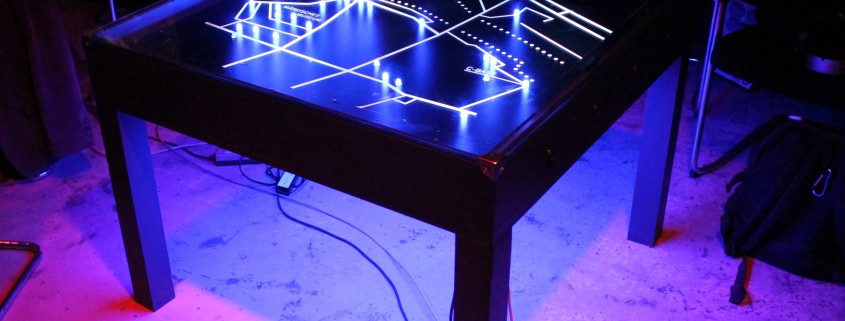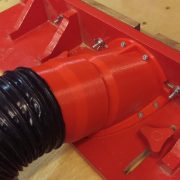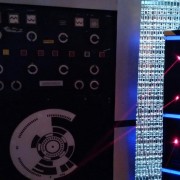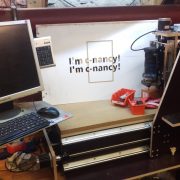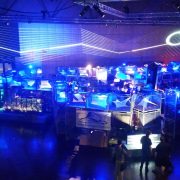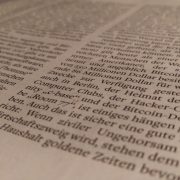Ingress table
Explanation of the game
Ingress is an alternate reality game from Niantic Labs for smartphones. The game uses the location data of the device. The player needs to physically walk outside, to so called “Portals”. Portals can be unique architecture, monuments, grafitti, or any public display of creativity in the public space. Players are divided into two teams, which compete against each other to bring physical areas as large as possible under their virtual control.
The locals (Berlin, Germany) that play for the blue team meet regularly in the rooms of c-base e.V. but players that play for the green faction are equally welcome.
Tasks and requirements
The aim of this project was to create a unique piece of furniture in the public area of c-base, that serves as a meeting point for Ingress players. Since the public areas are, among other usecases, used as a Bar, this piece of furniture needs to be exceptionally robust. To achieve maximum effectiveness, the players of the game need to team up. The most effective team consists of 8 players. Therefore, the table need to provide charging power to 8 smartphones at the same time.
Activities
The development of the blueprints for the sturdy wooden structure, as well as the interior design for the installation of various (partially transparent) levels of illumination elements was my responsability. I created several 3D models.

Part of the wooden parts were cut by a carpenter for us as the complex shapes couldnt be made precise enough with the means of our workshop. Furthermore, I was the only German-speaking participants in the project, so I was responsible for the communication with suppliers, and for the entire purchase of parts.
After assembling the wooden structure, the table was sealed and painted dark gray. While installing the electrical parts, I was tasked with the wiring of various levels of LEDs in the table, as well as the wiring of the USB ports for charging smartphones. The 230V cabling in the table was performed by me and tested before commissioning by a master electrician. The electronical control for the LEDs was developed by @little_endian. the film plot that represent the map of the neighborhood was made by @garytube_ber 
The table was covered with a 12mm thick armored glass plate with anti-scratch coating. This was done due to the environment – in a Bar one needs to expect dancing on tables and toppling glass bottles The overall construction was designed so, that it could theoretically hold up to such loads and impacts.
Costs

The costs of the project amounted to about 900€. They were covered by the company Flowhub. The software programming was carried out by employees of Flowhub in their spare time.
A good overview of the volunteers, that wrote the software can be found here: github.com/…contributors. This sponsorship happened, because the company wanted to showcase the possibilities of the software platform, by building something that is seen by a wider audience, that demonstrates usecases that are uncommon or new for Flowhub.
Another Blogpost about this project has been written by Henri Bergius, he lead the softwaredevelopment for this project. You can find this blogpost here: http://bergie.iki.fi/blog/ingress-table/


